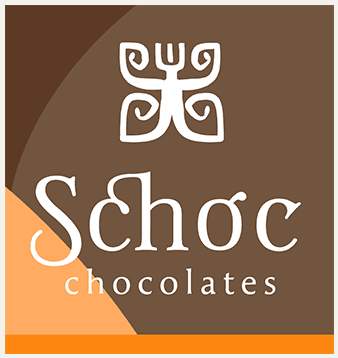In the beginning
The beginnings of chocolate are shrouded in secrecy.
Once a magical elixir, the religious aspects of chocolate are now lost in the mists of time. What we do know comes from the home of the Gods, the mountains of South America, the Olmecs, the Mayans, the Toltecs, the Aztecs.
It all started with a drink
Chocolate was known as the drink of the Gods. It has been said that the god Quetcalcoatl (the mythical gardener of paradise also a benevolent figure personifying wisdom and knowledge) bestowed the seeds of the cocao tree upon his people out of the love he had for them. The Botanical name for the cocao tree is Theobroma cacao which means literally “drink of the gods” (from the Greek word theos meaning God and broma beverage). And why not? Is not chocolate divine and the nectar of the gods?
This chocolate drink is still considered spiritual in some parts of Mexico. The energy of the spirit of chocolate is transferred into the foam by the brujo, magician, person or priest making the drink. The drink then becomes a gift of the spirit of chocolate, for the person who ordered it. This is one reason why it can sometimes take time to make a good chocolate drink.
(so, as you see, the giving and receiving of chocolate is not something new)
And on to celebrations
Chocolate drink was used by the Aztecs at the state banquets. Its consumption formed the climax of the festivities. At Montezumas Court, chocolate was drunk from golden goblets which were then tossed into the lake.
Christopher Columbus tried this chocolate drink and didn’t like it. In those days the drink was made with water or a type of beer and then with chillies added. Not what I would expect in my chocolate drink.
Hernan Cortez tried it at a lavish banquet, held in his honour, by the Aztec Emperor Montezuma II. According to most reports, Cortez is the person who brought chocolate to Spain in 1527. But this is not correct; there are no records of Cortez bringing chocolate to Spain. Ships of that time had records of what was in their holds and no mention is made of cocoa beans or chocolate.
However, the first documented evidence was to Prince Philip of Spain at the Spanish court in 1544. We assume that chocolate fascinated the court with its new taste sensation. They added sugar and spices as they found it too bitter for their taste.
Chocolate and love (and one or two other ailments)
Chocolate was not only known as an aphrodisiac, but also as a cure for all sorts of ailments – from weak stomachs to tuberculosis.
Chocolate calmed anger, was used for vigour, fertility, passion, wisdom. Even then it was known to cure a broken heart, to give a sweetness of breath, a stimulant for the mind and spirit.
Once chocolate had a hold in Spain it is reported that Anne of Austria the Spanish Princess introduced chocolate to France when she married Louis XIII. This is only one theory but again used by most food writers when writing on the history of chocolate. It is said that she had only two passions in her life, chocolate and the king.
One other theory is that it was the clergy who took chocolate to France. From there it spread out to all of Europe. Two hundred years latter it became chocolate as we know it today; and it still gives that spirit of love to all who allow it into their lives. It is the very essence of being!
Chocolate trees
The cacao tree which, will only grow in areas 15 to 20 degrees either side of the equator (imagine that, those lovely warm places where chocolate melts before it gets to your mouth).
There are two main varieties of Theobroma cacao, (“cacas” for Latin lovers). Theobroma criollo (meaning “native” to tropical South and Central America) and Theobroma forastero (meaning “foreign”). The first is the cream of the crop, the finest, a very delicate bean that only accounts for 5 to 10 percent of the world’s production. The latter is now mainly grown in Brazil and West Africa this variety is hardier and grows faster than the criollo trees. The bean has a strong bitter flavour and is used in 80 percent of the worlds production.
There is a variety of the forastero called amenolado (“Arriba” bean) which is up there with the best in the world of chocolate. There are also the crossbreeds between the criollos and the forastero one of which is trinitarios from Trinidad hence the name.
The perfect blend produces the best result
So you can conclude from this that a good chocolate –much like fine wine and the ideal coffee – is the result of the ideal blend of cacao beans. Find them in the perfect chocolate, and enjoy.
